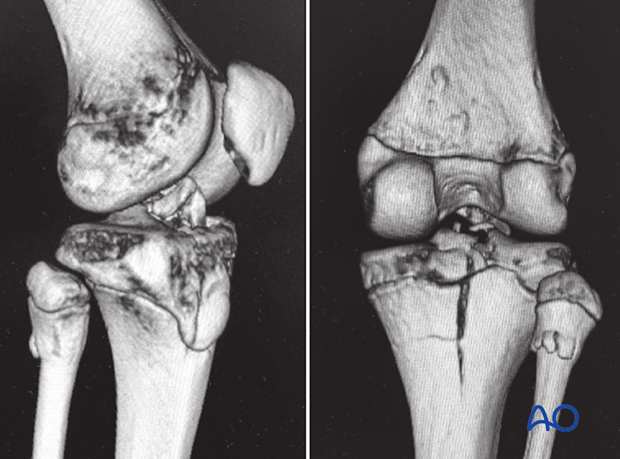Epiphyseal and epi-metaphyseal fracture (Salter-Harris III and IV)
Definition
Salter-Harris type-III and IV fractures of the proximal tibia are classified as 41t-E/3 and 41t-E/4.
Salter-Harris type-III fractures are rare as they often contain a small metaphyseal fragment and are therefore Salter-Harris type-IV fractures.
Salter-Harris type-IV fractures may be multifragmentary.
An associated fibular fracture may have a different configuration, may not involve the physis, and is classified separately.
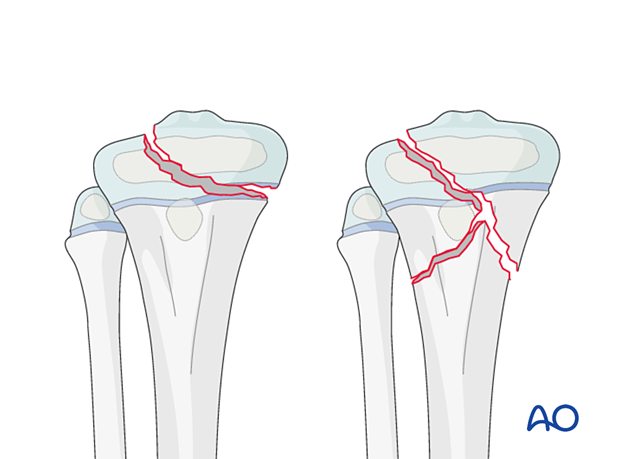
Further characteristics
Proximal tibial physeal fractures are associated with a high rate of growth disturbance.
A step in the articular surface may lead to osteoarthritis.
Imaging
These AP and lateral x-rays show a Salter-Harris type-IV fracture in a 13-year-old patient.
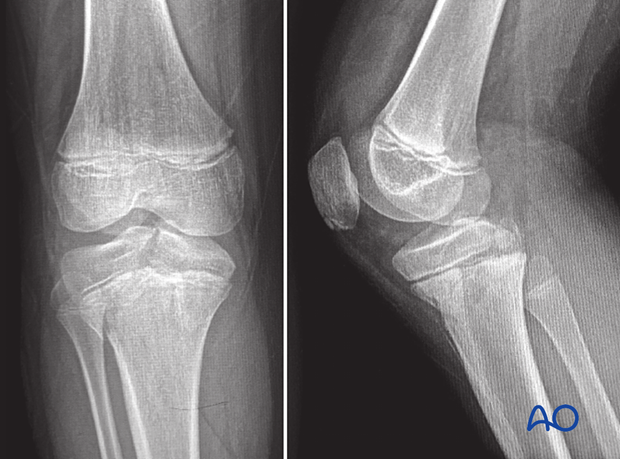
A CT scan may be required to accurately assess the fracture pattern and articular surface displacement.
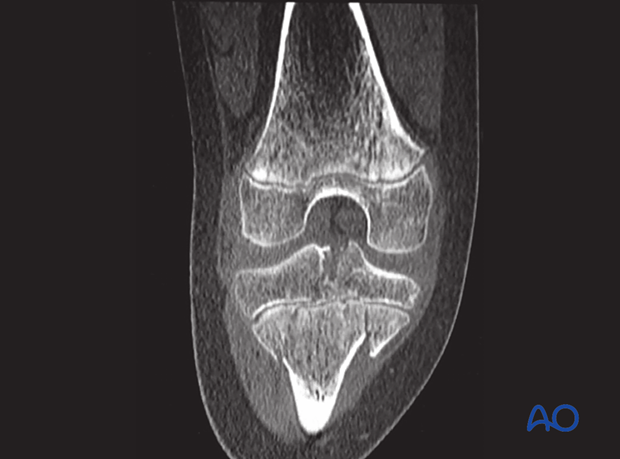
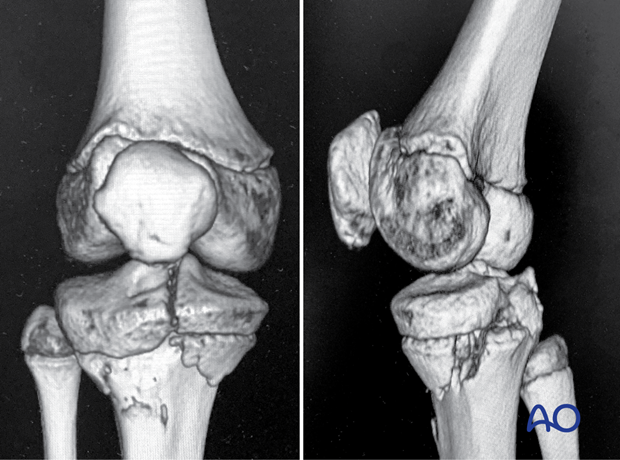
AP and lateral x-rays of a tibial Salter-Harris type-IV fracture with an associated fibular fracture in a 13-year-old patient.
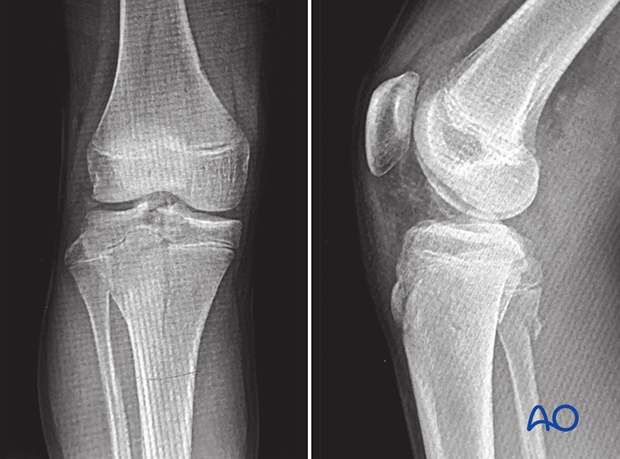
The CT image shows that the fracture also involves the tibial spine.
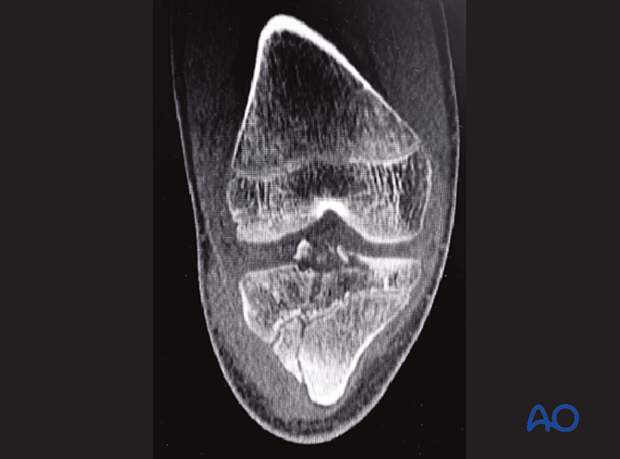
3D-rendered CT images accurately demonstrate the fracture pattern.
